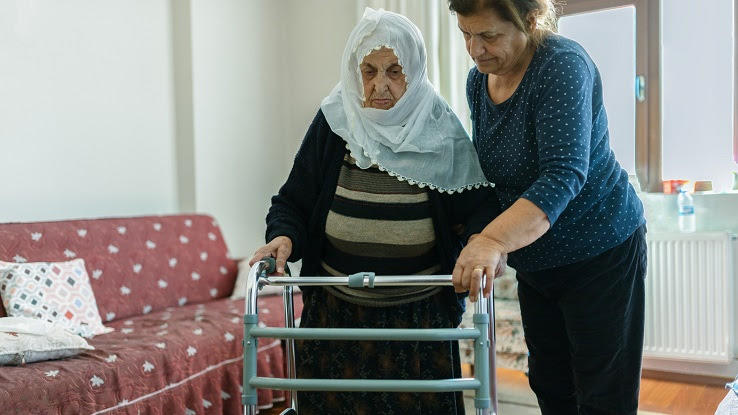
When people have a serious illness or a long-term health condition, getting a type of healthcare called palliative care can help improve their daily lives. These types of conditions might not be curable. Or, they may make it difficult for people to live comfortably or take care of daily tasks while they’re having treatment for the condition.
Palliative care helps people with long-term or severe health conditions manage their symptoms better. It’s a newer type of medical care that takes people’s individual needs into account and aims to meet their medical, physical, spiritual and emotional needs. If you’re considering palliative care for yourself or a family member, it’s important to understand what it is, how it works and how to talk to your doctor about it.
How Does Palliative Care Work?

“Palliative”means care that relieves pain and other symptoms without treating the condition that causes them. The main goal of palliative care is to help relieve uncomfortable symptoms you experience because of your illness. It also aims to relieve stress you feel because of your condition. You can get palliative care at any stage of your illness or while living with any serious health condition.
Palliative care can make you more comfortable, both mentally and physically. But it’s a supplement to other treatments you might be getting for your condition. It’s meant to provide support and improve your quality of life. It isn’t a replacement for other medical treatments like medications or surgeries.
You receive palliative care from a special team of different professionals. Each of them is experienced in helping with a different aspect of your life. Your team might include the following people:
- A nurse or doctor is at the center of a palliative care team. They’re trained to provide support and medical treatment for your condition. They might also coordinate your overall care plan.
- A social worker can help you manage financial aspects of your care and connect you with programs that give you access to resources in your community.
- Therapists and psychologists can teach you coping strategies to help you deal with stress and improve your mental health.
- Some palliative care teams also include clergy members or other religious leaders who can help you bring more spirituality into your life.
When you opt for palliative care, you can work with others to define your needs, and your providers help you meet them. Your team members also work together to make sure they address all your needs.
Another important part of palliative care is that it doesn’t focus on just one aspect of your life. It incorporates multiple aspects of who you are and aims to improve all of them. It also pairs you with a wide variety of resources that can help you thrive.
Who Can Benefit From Palliative Care?

As mentioned, palliative care is meant for people who have long-term or severe illnesses. It’s not only meant for people who have a terminal condition the way hospice usually is — palliative care isn’t only end-of-life care. It’s true that some elements of palliative care can work for people who are reaching the end of their lives. But it can also help you if you frequently stay in the hospital because of a health condition or if you visit the emergency room often due to your illness. If you have a health condition that you feel is negatively impacting your day-to-day living and want to see improvements in multiple areas of your life, palliative care may be for you.
Palliative care is an option for people with a wide variety of chronic illnesses. People who experience strokes, kidney failure, cancer or congestive heart failure often receive palliative care. Palliative care is also a common choice for people who have AIDS, Huntington’s disease, Parkinson’s disease, Alzheimer’s and other conditions that don’t have cures yet. It can be especially effective if you’re getting treatments, such as chemotherapy for cancer, that cause their own uncomfortable symptoms.
You can also choose to end palliative care and re-enter it if your symptoms improve and then start to decline again. If your doctor tells you later on that your condition has become terminal, you can continue getting palliative care. Your team can continue to provide support while you consider entering hospice later on.
What Does Palliative Care Usually Include?

Palliative care programs are designed to meet individual needs. So, they look different from person to person. The type of care you get ultimately depends on what you and your team decide works best. However, there are some common ways people receive this type of care.
Depending on your needs, you might receive care in your doctor’s office once in a while and have home visits from other members of your team. Or, you might stay in the hospital while getting palliative care. In that case, all your team members will work with you in the hospital. Some doctors also offer in-home palliative care. That way, you can continue living at home where it’s more comfortable while getting treatment. Palliative care clinics are another option. They specialize in providing certain palliative treatments. Sometimes, nursing homes also offer this type of care.
The focus of your care will also depend on your personal experiences and treatment goals. For example, imagine you’re experiencing a lot of physical pain due to your condition. Your care team might focus on reducing your pain and demonstrating lifestyle changes to make that keep you as comfortable as possible. On the other hand, imagine you’re experiencing a lot of anxiety after your diagnosis. In that case, you might focus more on working with a therapist. They’ll teach you coping skills to boost your mental health and ease your stress.
Where Can You Find Palliative Care?

The Center to Advance Palliative Care is a nonprofit organization that regularly updates a national palliative care provider directory. In it, you can find palliative care providers and teams near your home. You can access the directory here.
The National Hospice and Palliative Care Organization is another agency that can help you find a palliative care doctor. This nonprofit is a member organization that doctors and other providers join. Its goal is to increase access to palliative care and hospice care to help improve people’s quality of life. Using your location information, you can find a doctor near you with the NHPCO’s online directory.
Your current doctor can also help you find providers who specialize in providing palliative care. This way, your doctor and palliative care specialist can communicate with each other to figure out the right course of action for your treatment. Your primary doctor can give recommendations based on all the details they know about your health. If you need to see a new doctor to get palliative care, your current doctor can explain the most important aspects of your condition and health to them. Having this information is important for making sure your care plan fully meets your needs.
Resource Links:
“Palliative care” via Mayo Clinic
“What is Palliative Care?” via the Center to Advance Palliative Care





